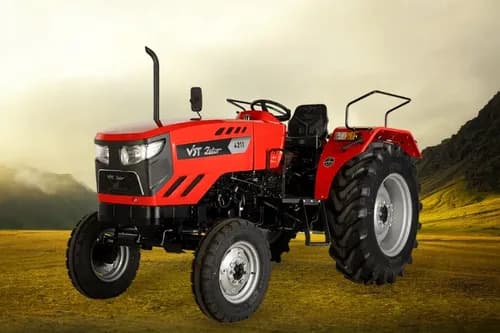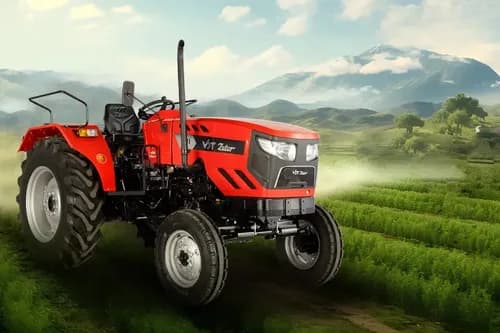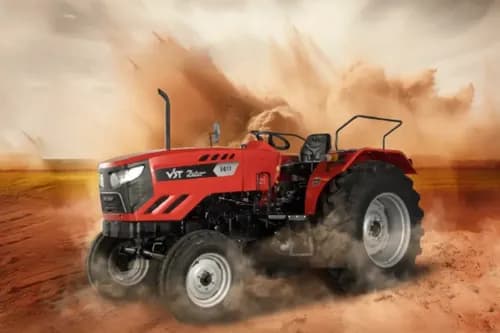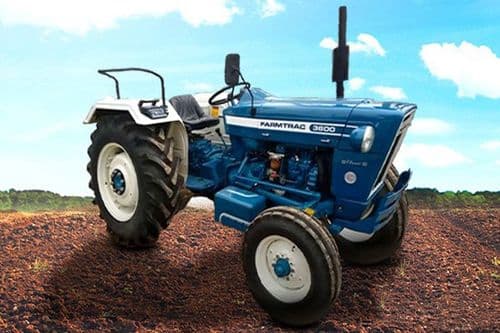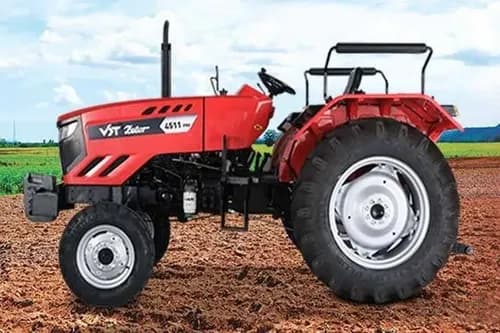Ad
Ad
Ad
How to Prevent Pest and Disease Outbreaks in Winter Crops?

Winter crops are those that are sown in the autumn or winter season and harvested in the spring or summer season. Some examples of winter crops are wheat, barley, mustard, peas, lentils, and vegetables. Winter crops are important for food security, income generation, and soil health. However, winter crops also face many challenges from pests and diseases, especially in India, where the climate is diverse and unpredictable. Pests and diseases can reduce the yield and quality of winter crops, and cause economic losses to farmers. Therefore, it is essential to prevent and control pest and disease outbreaks in winter crops using sustainable and integrated methods. In this article, we will discuss some of the common pests and diseases that affect winter crops in India, and how to prevent and control them using various techniques.
Common Pests and Diseases of Winter Crops in India
According to the Indian Council of Agricultural Research (ICAR), some of the common pests and diseases that affect winter crops in India are:
- Aphids: These are small, soft-bodied insects that suck the sap from the leaves, stems, and grains of crops. They can cause wilting, yellowing, curling, and stunting of plants. They can also transmit viral diseases, such as barley yellow dwarf virus and wheat streak mosaic virus. Aphids are more prevalent in dry and warm conditions.
- Termites: These are social insects that feed on dead plant material, such as crop residues, straw, and wood. They can damage the roots, stems, and grains of crops, and reduce their germination and vigour. They can also cause lodging, or bending of the crop stems. Termites are more prevalent in moist and clayey soils.
- Cutworms: These are caterpillars of various moths that feed on the leaves and stems of crops at night. They can cut off the plants at the base, and cause severe defoliation and mortality. Cutworms are more prevalent in sandy and loamy soils, and in fields with weeds and crop residues.
- Rusts: These are fungal diseases that cause reddish-brown or yellowish-orange pustules on the leaves and stems of crops. They can reduce the photosynthesis, growth, and yield of crops. They can also affect the quality and storage of grains. Rusts are more prevalent in humid and cool conditions, and in fields with poor drainage and air circulation.
- Blast: This is a fungal disease that causes greyish-green or brown spots on the leaves and stems of crops. It can also cause blighting, or drying of the entire plant. Blast can reduce the yield and quality of crops, and cause seed sterility. Blast is more prevalent in humid and warm conditions, and in fields with high nitrogen and low potassium levels.
- Powdery mildew: This is a fungal disease that causes white, powdery growth on the leaves and stems of crops. It can reduce the photosynthesis, growth, and yield of crops. It can also affect the quality and storage of grains. Powdery mildew is more prevalent in dry and cool conditions, and in fields with poor air circulation and high plant density.
How to Prevent Pest and Disease Outbreaks in Winter Crops
The best way to prevent pest and disease outbreaks in winter crops is to adopt an integrated pest and disease management (IPDM) approach. IPDM involves combining various cultural, biological, mechanical, and chemical methods to reduce the pest and disease populations and their damage, while minimizing the environmental and health risks. Some of the IPDM methods for winter crops are:
Cultural methods: These involve modifying the crop environment and practices to make it less favourable for pests and diseases. Some examples of cultural methods are:
- Selecting resistant or tolerant varieties of crops that can withstand pest and disease attacks.
- Rotating crops with different families or groups to break the pest and disease cycles and improve soil fertility.
- Sowing crops at the right time and spacing to avoid pest and disease build-up and competition.
- Removing and destroying infected or infested plants and crop residues to prevent the spread of pests and diseases.
- Maintaining proper soil health and fertility by adding organic matter and balanced nutrients to enhance crop growth and resistance.
- Irrigating crops properly to avoid water stress and excess moisture that can favour pests and diseases.
- Weeding crops regularly to eliminate the alternate hosts and shelters for pests and diseases.
Biological methods: These involve using natural enemies, such as predators, parasitoids, and pathogens, to control the pest and disease populations. Some examples of biological methods are:
- Encouraging or introducing beneficial insects, such as ladybugs, lacewings, and parasitic wasps, that can feed on or parasitize the pests, such as aphids and cutworms.
- Applying biopesticides, such as neem, garlic, and tobacco extracts, that can repel or kill the pests, or interfere with their growth and reproduction.
- Applying biocontrol agents, such as bacteria, fungi, and viruses, that can infect and kill the pests and diseases, or induce plant resistance. For example, Bacillus thuringiensis (Bt) can control cutworms, Trichoderma can control blast, and Pseudomonas can control powdery mildew.
Mechanical methods: These involve using physical or mechanical devices or barriers to prevent or reduce the pest and disease damage. Some examples of mechanical methods are:
- Using traps, such as yellow sticky traps, light traps, and pheromone traps, to monitor and capture the pests, such as aphids and moths.
- Using nets, covers, or fences to protect the crops from pests, such as birds and rodents.
- Using tillage, hoeing, or hand-picking to destroy the pests and diseases, such as termites and cutworms.
- Using pruning, clipping, or burning to remove the infected or infested plant parts, such as rusts and powdery mildew.
Chemical methods: These involve using synthetic or natural chemicals to kill or suppress the pest and disease populations. Chemical methods should be used as a last resort, and only when the pest and disease damage exceeds the economic threshold level (ETL), which is the point at which the cost of control is equal to the loss caused by the pest or disease. Some examples of chemical methods are:
- Applying pesticides, such as insecticides, fungicides, and herbicides, to control the pests and diseases, such as aphids, termites, rusts, and blast. Pesticides should be selected carefully, based on their efficacy, safety, and compatibility with other IPDM methods. Pesticides should be applied judiciously, following the label instructions and recommended doses, timings, and methods. Pesticides should be rotated or mixed with different modes of action to avoid pest and disease resistance and resurgence.
- Applying botanicals, such as neem oil, eucalyptus oil, and citronella oil, to control the pests and diseases, such as cutworms, powdery mildew, and blast. Botanicals are natural plant extracts that have insecticidal, fungicidal, or repellent properties. Botanicals are generally safer and more eco-friendly than synthetic pesticides, but they may have lower efficacy and shorter persistence.
Conclusion
Pest and disease outbreaks in winter crops can cause significant losses to farmers in India. Therefore, it is important to prevent and control them using an integrated pest and disease management approach, which combines various cultural, biological, mechanical, and chemical methods. By adopting IPDM, farmers can reduce the pest and disease damage, enhance the crop yield and quality, and protect the environment and health.
Features & Articles
How to Choose the Perfect Tractor for Your Farm: A Comprehensive Guide
Choose the right tractor by assessing farm needs, horsepower, efficiency, comfort, and budget to enhance productivity and savings....
09-Jan-25 09:43 AM
Read Full NewsTop 7 Sonalika Mini Tractors for Efficient Farming
Explore the top 7 Sonalika mini tractors, featuring compact designs, advanced features, and affordable prices for efficient farming....
06-Jan-25 10:27 AM
Read Full NewsTop 10 Tractors Within the 35 HP Range: Best Models for Agricultural Practices
Explore top 35 HP tractors from Mahindra, Sonalika, and John Deere, designed for efficiency, power, and versatility....
30-Dec-24 11:58 AM
Read Full NewsTop-Selling Solis Tractors: 5015 E and 5015 E 4WD – Features and Applications
Solis tractors combine advanced Japanese technology, durability, and versatility, delivering high performance for agricultural and industrial applications at affordable p...
27-Dec-24 03:56 PM
Read Full NewsWheat Price Forecast for 2025: What to Expect Across Major Indian States
Wheat prices in 2025 are expected to fluctuate, with strong market conditions and better prices in key wheat-producing states....
26-Dec-24 10:07 AM
Read Full NewsKisan Diwas 2024: Honoring Farmers and Promoting Sustainable Agriculture
Kisan Diwas celebrates farmer’s contributions, honors Chaudhary Charan Singh's legacy, and promotes sustainable agriculture through awareness, innovation, and support....
23-Dec-24 06:57 AM
Read Full NewsAd
Ad
As featured on:


Registered Office Address
Delente Technologies Pvt. Ltd.
M3M Cosmopolitan, 12th Cosmopolitan,
Golf Course Ext Rd, Sector 66, Gurugram, Haryana
pincode - 122002













